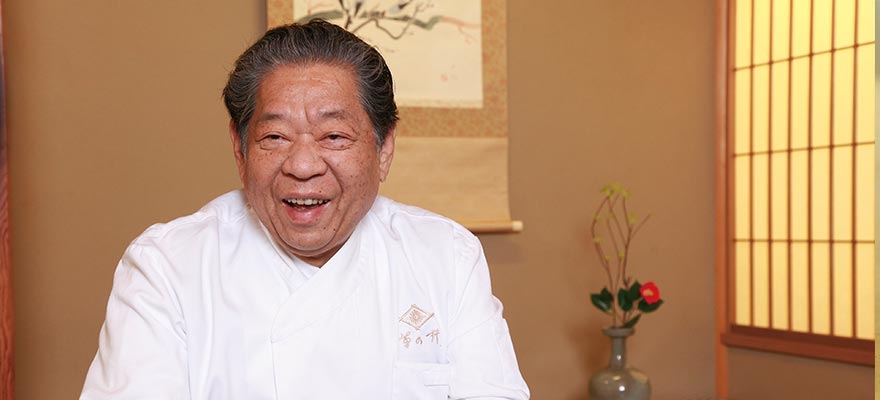Home > Highlighting JAPAN >Highlighting Japan April 2014>Washoku
Highlighting JAPAN
Washoku
Interview: Yoshihiro Murata
Japanese umami : makes for healthier global cuisine

In December 2013, Japan's traditional washoku cuisine was recognized by UNESCO as an element of Intangible Cultural Heritage. Previously selected cuisines include French gastronomy and the Mediterranean diet, but this is the first time the daily cuisine of an entire nation has been included as a cultural property.
So just what is behind the appeal of washoku? We spoke with Yoshihiro Murata, owner of Kikunoi, a traditional Japanese restaurant in Kyoto and chairman of the board of the Japanese Culinary Academy, a nonprofit organization promoting the spread of Japanese cuisine.
What do you feel were the biggest reasons Japanese cuisine was selected as an element of World Heritage?
First would be the way Japanese food is closely tied to Japan's traditional rites and rituals. For example, we can see from how on New Year's morning everyone eats traditional osechi-ryori (special food served in stacked boxes), or how local communities will have outdoor imonikai taro-cooking parties, that Japanese culture and communication are deeply tied to the act of eating. The second reason is washoku's seasonal quality. Third is its emphasis on the ingredients' natural flavors. And fourth, Japanese cuisine is healthy.
What's the background and history of Japanese food culture?
Previously, Japan was a closed society for approximately 200 years, while Buddhist culture forbade eating four-legged animals. It was during this period that Japanese cuisine developed its unique traditions. We might also say our serious temperament and passion for research have greatly contributed to continuous improvements in the quality of Japan's ingredients. Whether it's fruit, vegetables or anything else, Japanese food is truly delicious. It has an excellent worldwide reputation. This is the result of our farmers' dedicated efforts.
What has been the overseas reaction to the savory umami quality of Japanese cuisine?
René Redezpi, chef at Denmark's Noma restaurant – which has been ranked the top restaurant in the world – has studied Japanese cuisine. Rather than traditional bonito flakes, he uses 'deer flakes' to lend his food a deep savory umami. Other young chefs around the globe are actively studying Japanese food and bringing umami to their plates as well. In France alone, there are already 20 one- and two-star Michelin restaurants headed by Japanese chefs. Based on the high regard their dishes attract, we can see that more and more people overseas are coming to appreciate the distinctive umami flavor. French cuisine makes copious use of oils and fats, but the latest research has found that if you increase the amount of umami in a meal, the diner's satisfaction remains unchanged even if the amount of fat is reduced. In short, umami has the potential to make cuisine around the world healthier.
It goes without saying that Japanese food has a global reputation for being healthy.
A full course of French food comprises 23 plates and comes in at 2,500 kilocalories. By contrast, Japan's traditional multi-course kaiseki cuisine has 69 plates before dessert, yet the calorie count reaches only around 1,000 kilocalories. Only Japanese cuisine offers a full-course meal with such a variety of ingredients and such a low calorie count.
What should Japan be doing to make washoku better known overseas?
Washoku today is still just a seedling. For it to extend its branches and become a towering tree on the world stage, the key is to not restrict it with narrow definitions or rules. It's best if people in different countries interpret washoku to fit their needs and lifestyles, making it suitable to their country's tastes. Moreover, both the government and Japanese people at large should share the appeal of Japanese food with the world, broadcasting that information far and wide, and take steps to allow young chefs to come to Japan to study washoku in detail for themselves.
© 2009 Cabinet Office, Government of Japan






